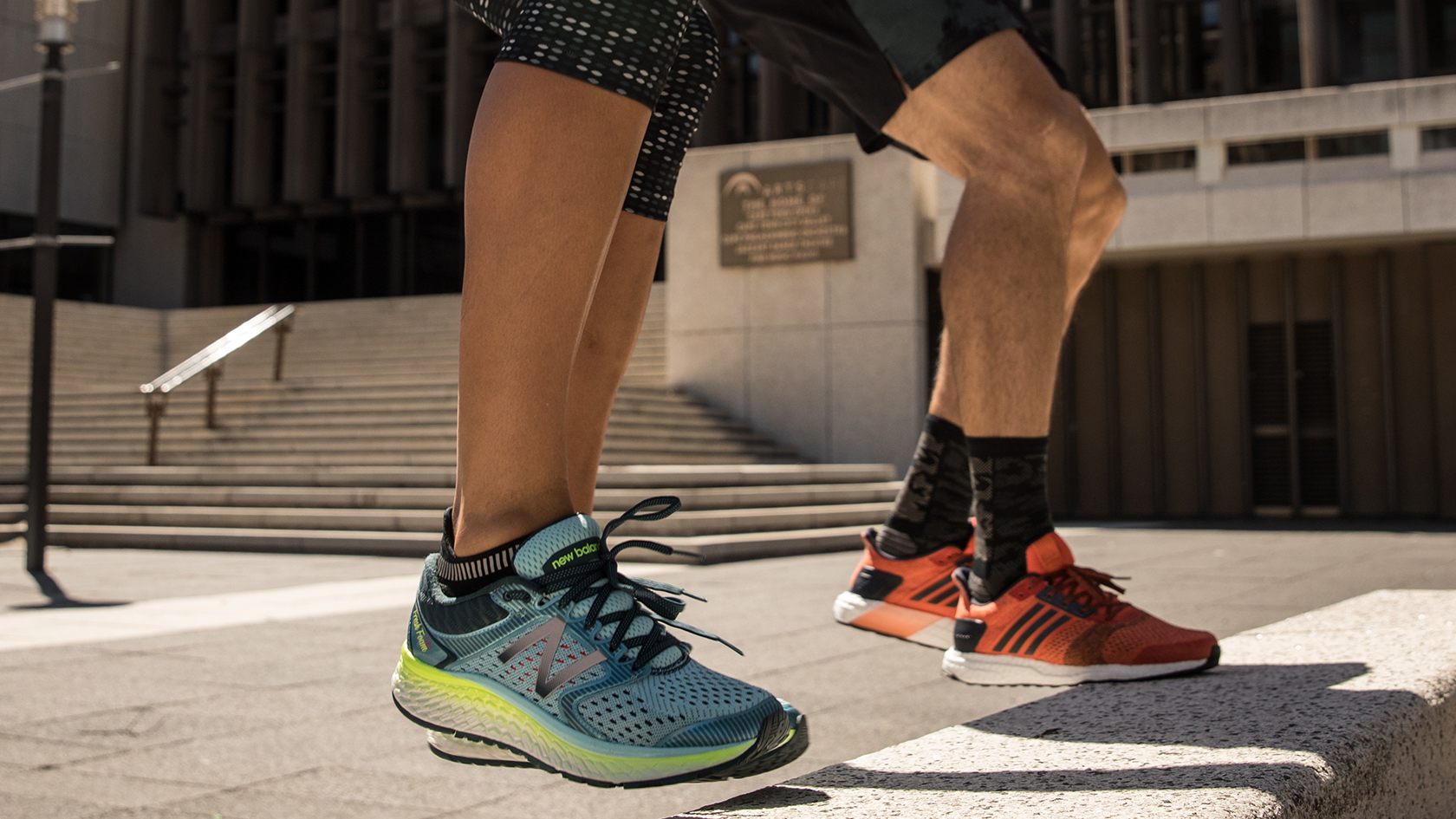If you're anything like us, your run is your intimate concert - lined up with a curated set list just for you! But did you know that syncing your stride to the right beat can actually boost your performance, help you run further, and even make your runs more enjoyable? Welcome to the world of BPM (beats per minute) and the science behind finding your running rhythm....
What Is BPM and Why Does It Matter for Runners?
As any DJ or music fan will tell you, it's all down to the song tempo and the beats per minute (BPM). BPM indicates the number of beats in one minute, so 60 BPM means a beat that sounds once per second, while 120 BPM would be twice as fast at two beats per second.
In its natural state, your brain is inclined to sync your footsteps to anything with a repetitive beat… this can include train tracks, the person stomping next to you, and, of course, music.
Try it! While listening to a song, try and slow down or speed up your pace. When you start, you’ll think “This is easy!” but when you don’t realise it, you’ll notice that you’re back at the pace of the song's BPM.
“Humans have a natural predisposition to respond physically and emotionally to music - it is almost as though we are ‘hardwired’ to respond to it.” — Dr. Costas Karageorghis, sports psychologist

Subliminal Synchronisation
Ever noticed your feet tapping to a song or your stride falling into step with a beat? That’s subliminal synchronisation in action. It’s not just a fun quirk—it can help you maintain a consistent pace, especially during longer runs. Music is also a powerful mood booster. It can help you push through tough moments, distract from discomfort, and make your run feel more enjoyable—even when the going gets tough.
Author of 'Applying Music in Exercise and Sports', sports psychologist Costas Karageorghis, PhD says:
“Humans have a natural predisposition to respond physically and emotionally to music — it is almost as though we are ‘hardwired’ to respond to it.”
“Music stimulates the part of the brain responsible for regulating wakefulness (the ascending reticular activating system) which energizes us and makes us want to move.”
His research shows that when you synchronise your movement to music, your body becomes more energy efficient. Cyclists, for example, have been shown to use up to 7% less oxygen when pedalling in time with music. For runners, this means you can go further, faster, and with less effort.
Can You Hack Your Brain To Improve Your Speed?
Yes, you can—but it’s all about gradual adaptation. According to running coach Janet Hamilton, using music to slightly increase your cadence can help you run faster and more efficiently. However, don’t overdo it. Increasing your cadence by more than 5% at once can lead to fatigue and reduced running economy. Instead, aim for small, incremental changes—just two to six steps per minute at a time.
“Running with music is one of the ways I gradually adapt a runner to a slightly faster cadence.”
What does this mean for your run? Well, it means it will feel harder and take more effort the higher BPM you push for. Because of this, Hamilton recommends introducing gradual changes — to the order of two to six steps per minute — giving your body time to adapt to the BPM change.
Though there is no single cadence that fits all runners, Karageorghis’ research shows it predominantly benefits those who are doing a low- or moderately intense run.
“At running intensities above 75% of aerobic capacity, music is ineffectual at reducing perceived exertion.” “That’s because your brain is flooded with fatigue-related cues and it becomes much harder for it to process the music.”
What Is The Ideal Running BPM?
Finding the right BPM for your run depends on your pace and goals. Here’s a quick guide:
| Run Type | Ideal BPM Range |
|---|---|
| Jog/Easy Run | 120–125 BPM |
| Moderate Effort | 130–145 BPM |
| All-Out Effort | 140–145 BPM |
| High Cadence Training | 150–180 BPM |
“The ideal tempo range is 120 to 125 BPM for a jog and 140 to 145 BPM for an all-out effort. If you’re aiming for synchronicity (to keep your running at a consistent pace, or if you’re trying to increase your cadence as Hamilton mentioned above), then the ideal tempo range is 150 to 180 BPM.”
“For music to have a rousing effect, it needs to be both loud and fast.” — Dr. Costas Karageorghis
How To Find Your Running BPM
Finding your natural running cadence is straightforward:
- Warm up and run at your easy, everyday pace on a treadmill.
- Set a timer for 60 seconds and have a friend count the number of times one foot strikes the ground.
- Double that number-since you only counted one foot, this gives your total steps per minute (your cadence).
To start you off, why not head over to Spotify where you can see some 120BPM and 140BPM Runners Need playlists that will help you on your next run? Happy running!
Pro Tip → Many running watches and apps (like Garmin, Strava, or Apple Health) can calculate your cadence for you, making it even easier to find your BPM.
Where you're just getting started on a Couch-to-5K or planning your tenth marathon, explore our range of cutting-edge Shokz headphones. Using bone-conduction technology, Shokz headphones allow you to listen to your favourite tunes, podcasts, and radio stations while still taking notice of the world around you. Find the headphones to match your running style right here at Runners Need.
FAQs
For most runners, 120–125 BPM is ideal for jogging, while 140–145 BPM works for faster efforts. If you want to increase your cadence, aim for 150–180 BPM.
- Run at your usual pace for one minute.
- Count how many times your right foot hits the ground.
- Many running watches and apps can also measure cadence automatically, making it easy to match your music’s BPM to your natural rhythm.
- Double that number to get your total steps per minute (cadence).
Yes, matching your music’s BPM to your running cadence can help you maintain a steady pace, improve running efficiency, and make running feel easier. Studies show that synchronising movement with music can reduce perceived effort and help you run more consistently.
Music can help you run faster and longer, especially at low to moderate intensities. Upbeat tracks can distract from fatigue, boost motivation, and help you maintain a steady pace. While music may not directly increase your maximum speed, it can make tough runs feel easier and more enjoyable, encouraging you to go further.
Choose songs with a BPM that matches or slightly exceeds your running cadence.
- Use streaming services like Spotify or Apple Music to find playlists sorted by BPM.
- Online tools and BPM calculators can help you check the tempo of your favourite tracks.
- Many running apps and wearables also suggest music based on your cadence.
It’s safe to increase your cadence gradually—by no more than 5% at a time. Sudden, large increases can lead to fatigue or injury. Use music with a slightly higher BPM to gently nudge your cadence upwards, and allow your body time to adapt.
Not necessarily. Matching your cadence to music can be helpful, but it’s not essential for every run. Some runners prefer to use music only for motivation or during specific workouts. Listen to your body and use music as a tool, not a strict rule.
Absolutely! Music is a proven mood booster and motivator. Listening to your favourite tracks can make runs feel more enjoyable, distract from discomfort, and help you push through tough moments. Many runners find that music is the key to staying consistent and motivated.
There are some safety considerations when running with music, especially outdoors:
- Keep the volume low or use open-ear headphones to stay aware of your surroundings.
- Avoid noise-cancelling headphones in busy areas or near traffic.
- Always follow local guidelines and use extra caution when running in unfamiliar places.
Related Articles








